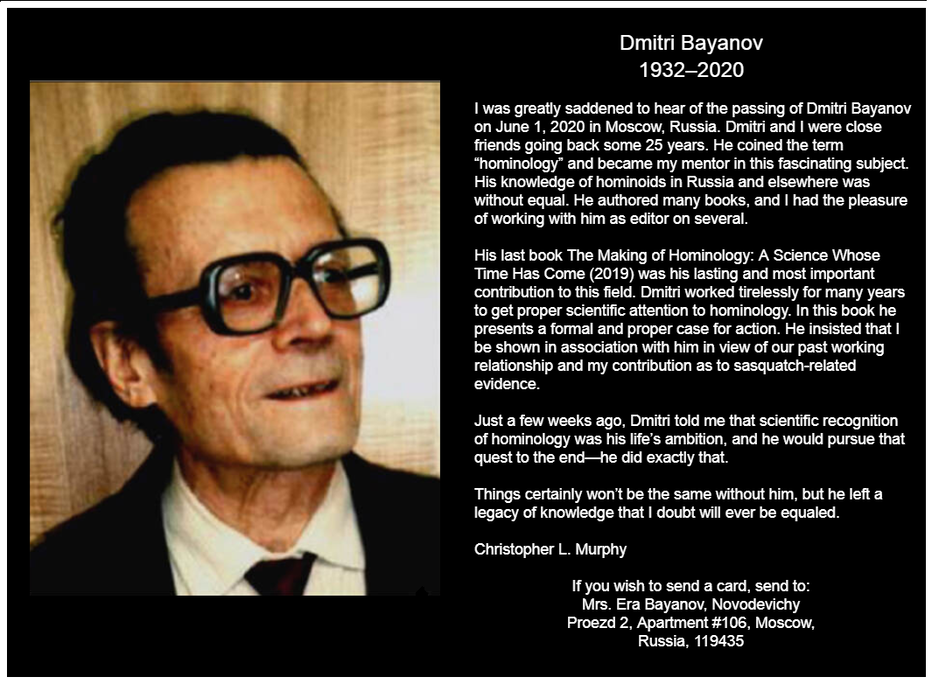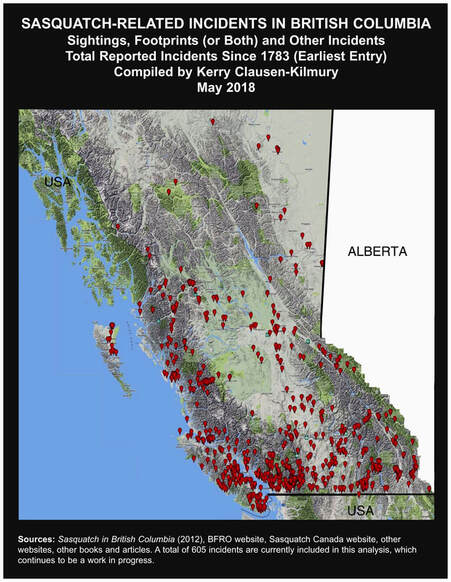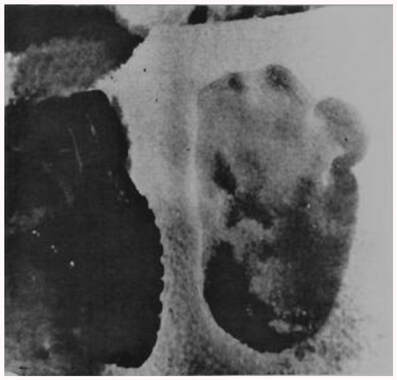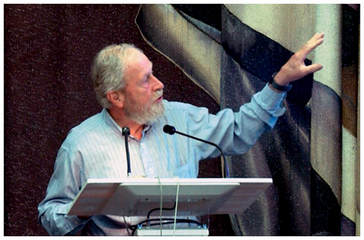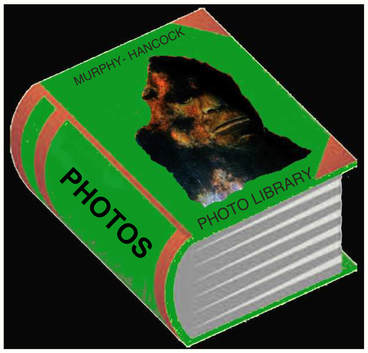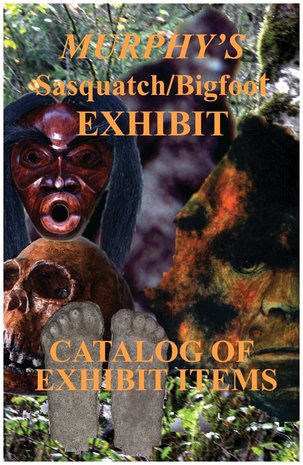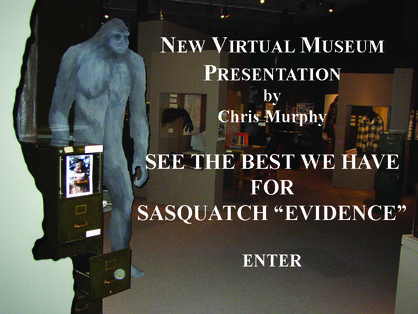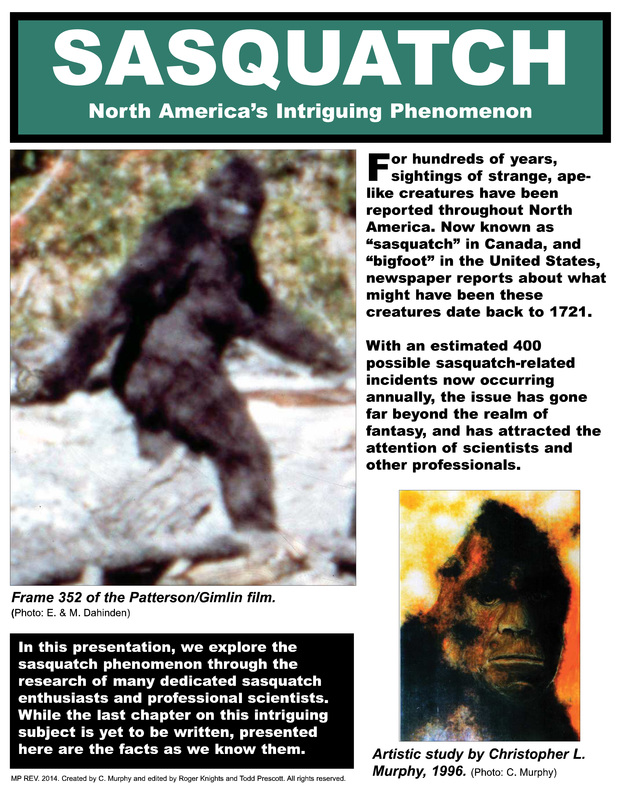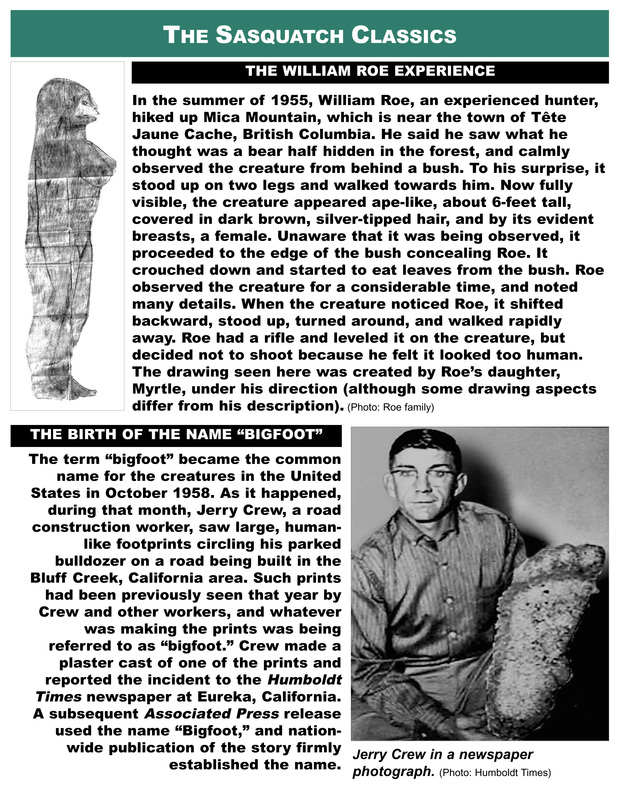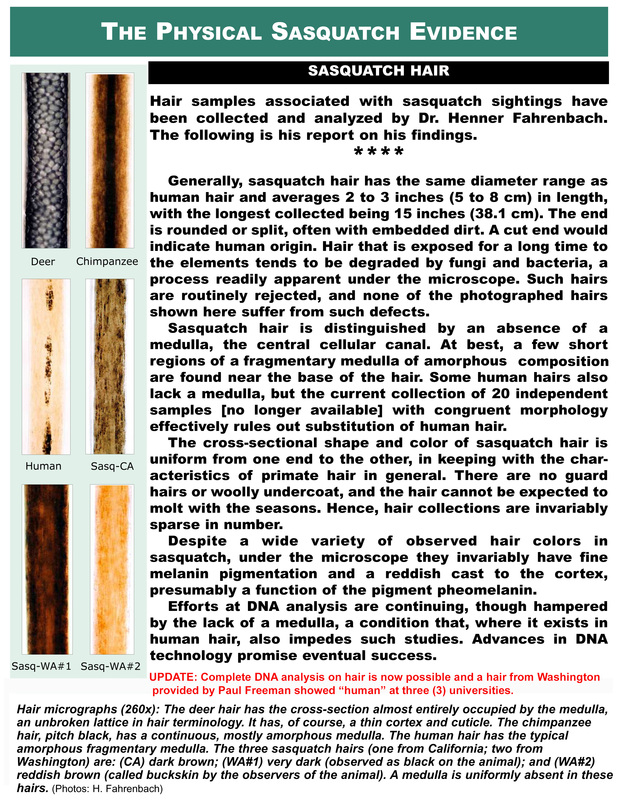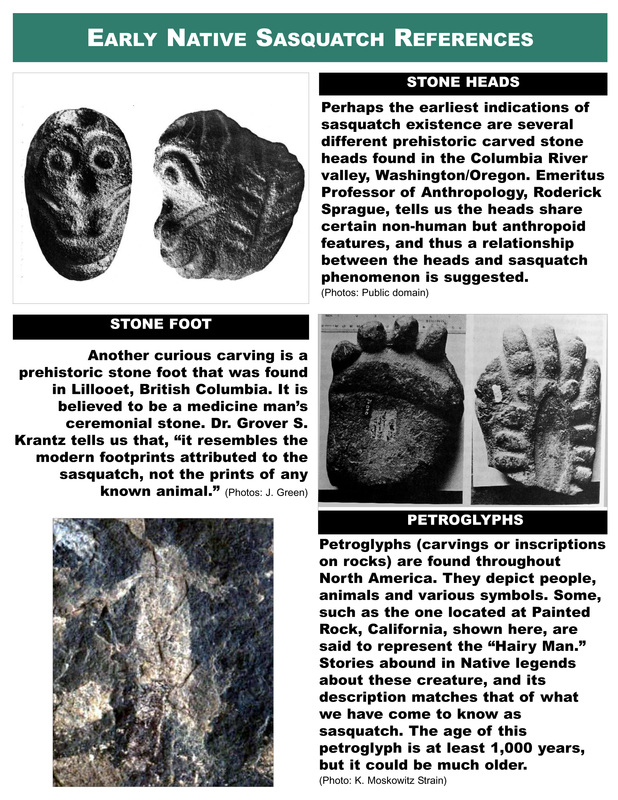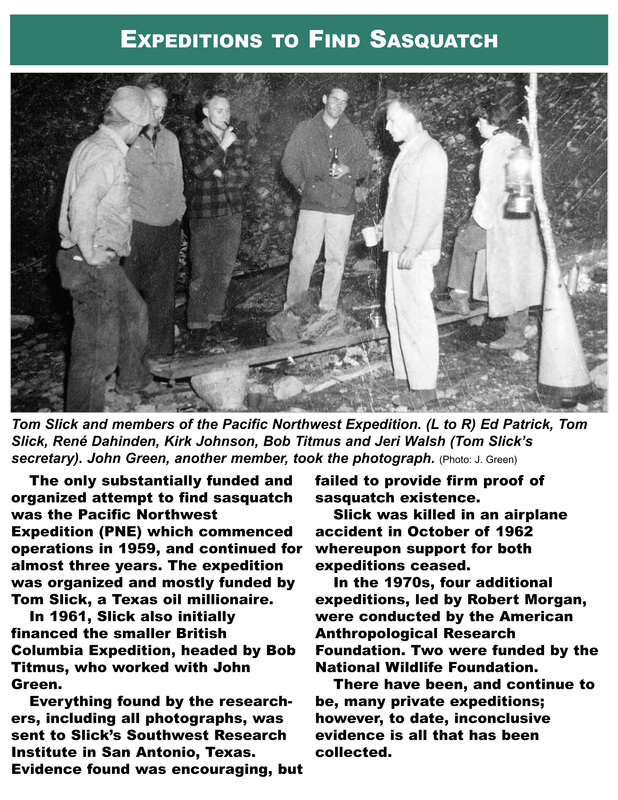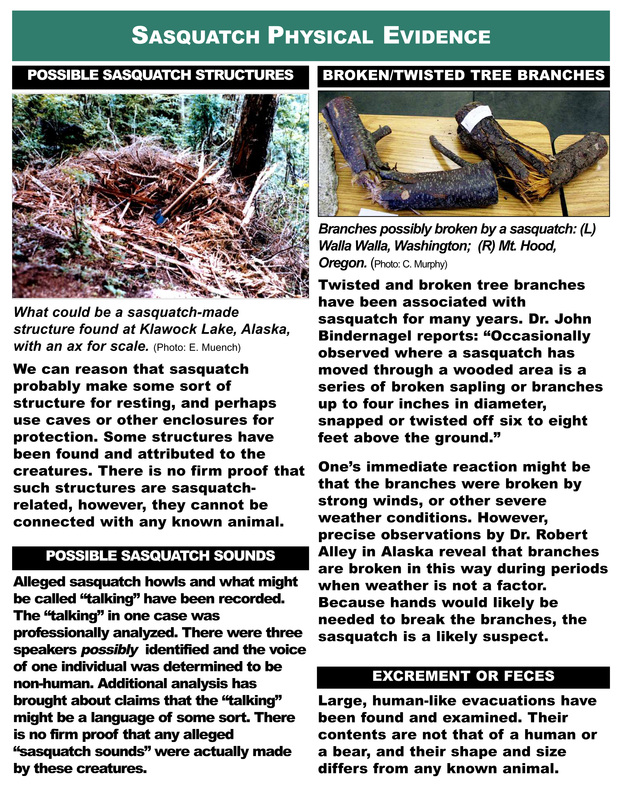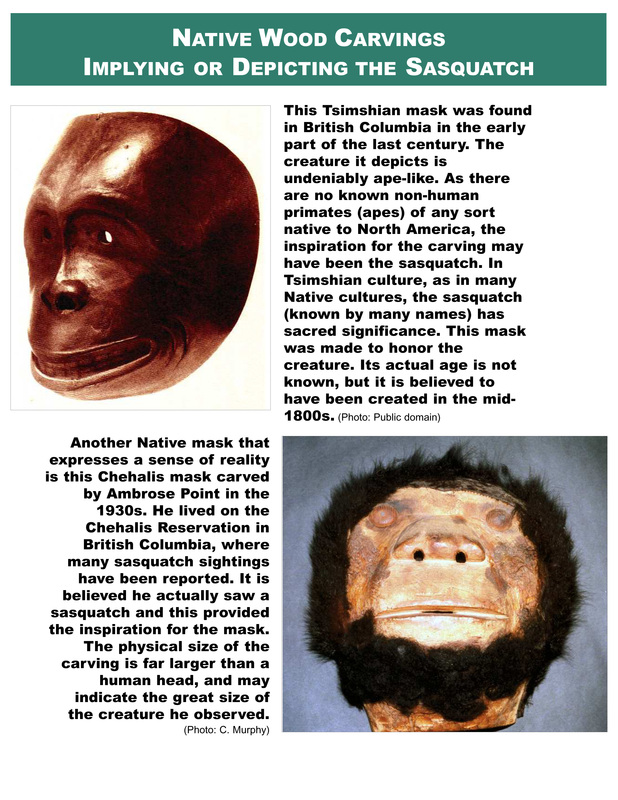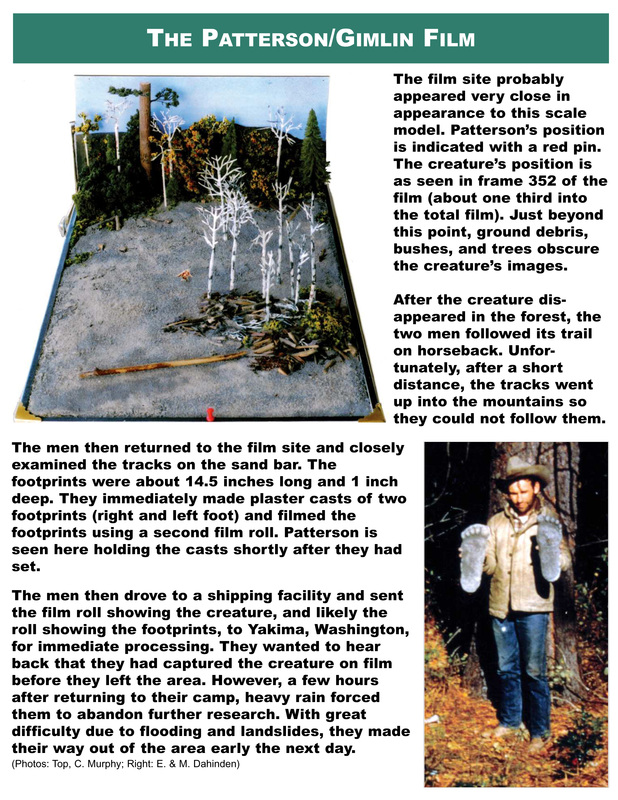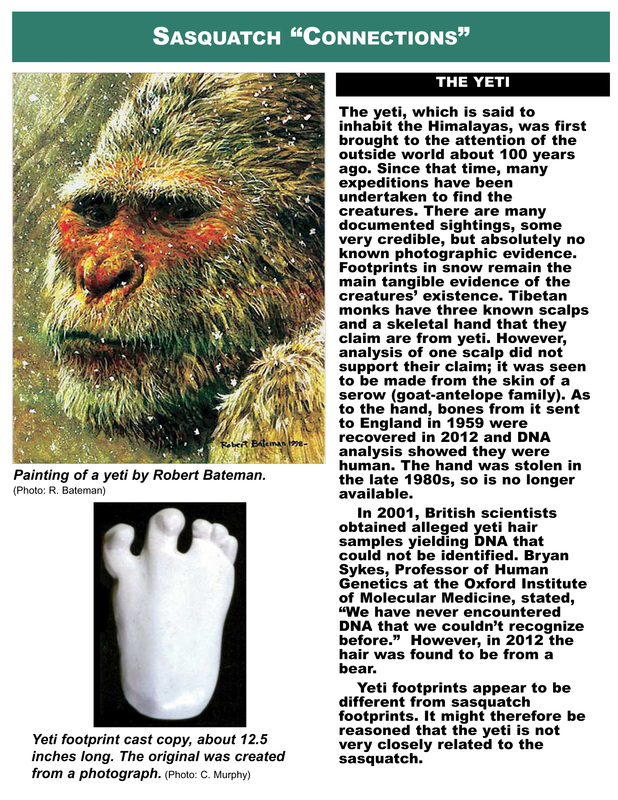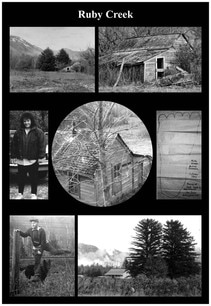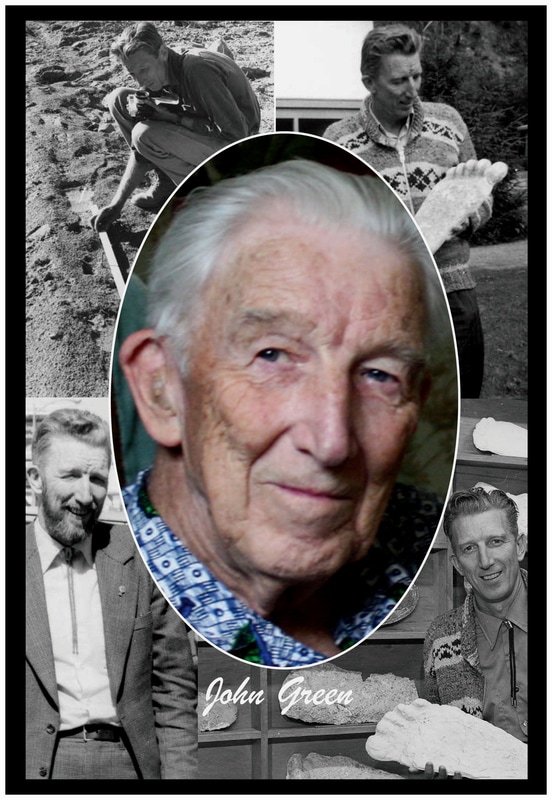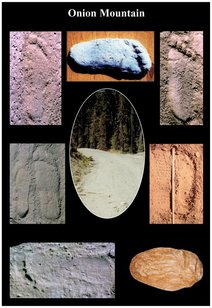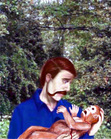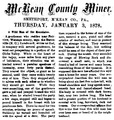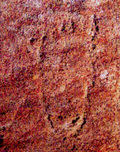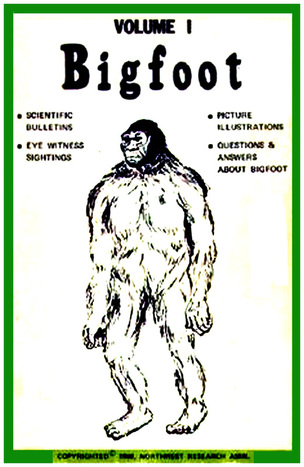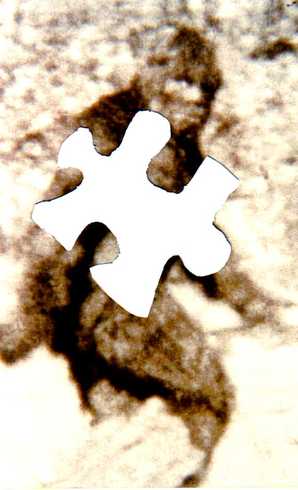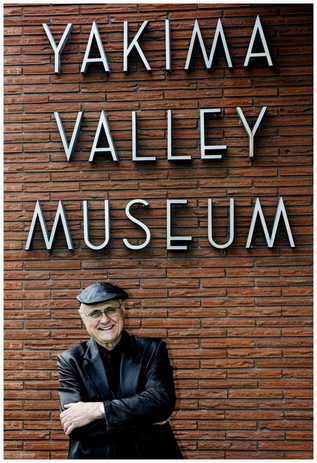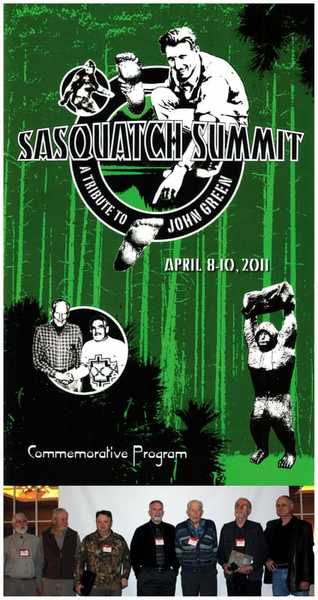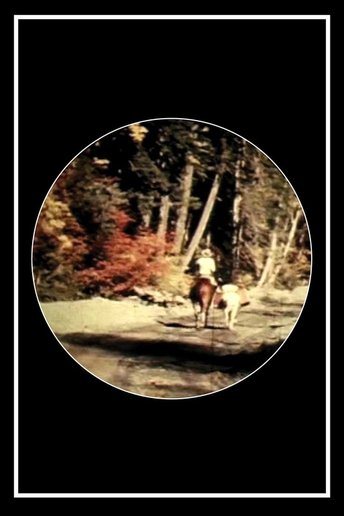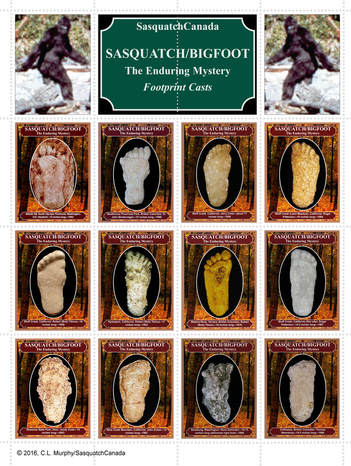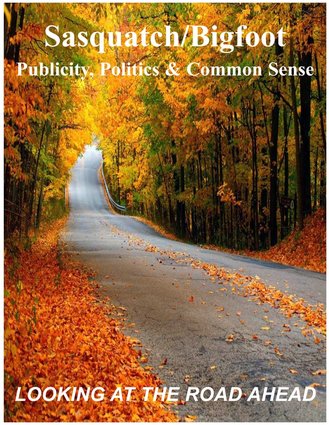Thank you for visiting Sasquatch Canada. This website contains current and authoritative information on sasquatch and other homins. Our main objective is to get more scientific involvement in our research and hopefully resolve the many questions we have on these intriguing beings. We would appreciate your help by recommending our website to others and thereby increase the readership scope of the information provided. We hope you enjoy our presentations.
Sasquatch Canada is an independent website owned and operated by Candy Michlosky in Nanaimo British Columbia Canada. She performs field research and works in cooperation with British Columbia researcher Chris Murphy and other researchers independently or with him as to the provision of material on this website. The use of Sasquatch Canada material on the internet by other researchers is approved and encouraged, providing appropriate credit is shown. Under no circumstance may material be used for commercial purposes (books, magazines, television productions) unless it is in the public domain or the individual copyright holder has been contacted and permission to use material has been obtained.
SEARCH THIS SITE
Shown here are artistic creations of the five primary homins in the field of Hominology. Much has been documented on the first four (sasquatch, yeti, Russian snowman, yowie) and they have many similarities. The last (yeren) does not appear to be as closely related and there is less information on this homin; but steadily increasing. They each have their own region in the world and have many different names within their specific regions, which can cause confusion. Please keep this in mind when reading material in books, magazines, newspapers and on the Internet. SASQUATCH CANADA includes all of these homins in papers and presentations because it is believed they are related in all, most or some respects.

|
Hancock House author, Chris Murphy, received the International Cryptozoology Museum Lifetime Award in 2020. He has written several books and contributed to many. In addition to being an author, Chris is an artist. Some of his material on hominology has been included in books by him and others. Chris’ hominology art is provided here. A link to his full presentation on art entitled ONE MAN’S ART, The Life and Works of a Canadian Artist will be provided on a link shortly. CLICK TO GO TO THE HOMINOLOGY PRESENTATION |
|
Sasquatch Discovered is the biography of Dr. John Bindernagel – Canada’s foremost sasquatch/bigfoot investigator. His intense childhood curiosity about the natural world, with a particular interest in ornithology, led to his involvement as a Junior Naturalist and his teacher dubbing him “the scientist” for his in-class contributions. By high-school, he was practicing good curatorial habits as he collected specimens for the museum he created in the family home.
While in university, he was intrigued by the story of an “ape-man” in British Columbia. During his time in Africa, he became familiar with the great apes and hypothesized the Sasquatch as North America’s great ape. On return to Canada, he chose to live in the Comox Valley, on Vancouver Island, B.C., and closer to the west coast rainforests– prime Sasquatch habitat. Here he aimed to study and pursue research on this elusive animal. John Bindernagel was the author of two seminal books, a popular conference speaker throughout North America, and the Canadian news media “go-to guy” for Sasquatch information. He was beloved by eyewitnesses and amateur investigators alike but largely dismissed by the scientific community. This book is a tribute to an upstanding man who followed his call and his passion at great personal and professional expense. He spent his last years championing the unfolding story of the discovery of the Sasquatch. This is his life’s story. |
Get your copy from Hancock House Publishers
IMPORTANT NEW FEATUREBRITISH COLUMBIA SASQUATCH RELATED INCIDENTS - INTERACTIVE CHART
|
NOT A YETI?
|
John Morley, Biologist |
The Science of Unidentified
North American Hominins John Morley, Biologist Our resident scientist John Morley has been providing papers for Bits & Pieces for some time now and it has been decided to accumulate them for easy reference on our main website page. John has been researching sasquatch since 2005. He founded the Texas Hominid Research group in 2009, and is well-known in both the USA and Canada as an ardent and thorough scientific researcher. John’s papers will be presented in both Bits & Pieces and on this platform as applicable. The following link will take you to the CONTENTS page where you may select (click) the paper you would like to read. |
When Art Imitates Life by Gene Baade
This is a special presentation delivered by Gene Baade at the sasquatch exhibit speakers’ forum, Lacey, Washington, May 31, 2019. Gene, an ordained Lutheran minister, has researched hominoids depicted in medieval artwork and provides remarkable insights on the place of homins in the minds and possibly lives of ancient people. Did relict hominoids exist alongside modern humans? Gene explores this intriguing question with astounding images. GO TO THE PRESENTATION PART ONE PART TWO |
|
Koffmann – Greenwell Interview
|
|
The Burtsev Hominology Papers
Dr. Igor Burtsev (b. 1940) commenced his study of hominology in Russia in 1965. He finished his education in 1977, graduating as a Candidate of History (equivalent to the North American PhD). During this time and to the present, he has traveled extensively in Russia and the United States researching the Russian snowman and the sasquatch or bigfoot. In 1972, he and Dmitri Bayanov were the first to thoroughly analyze the Patterson and Gimlin film, which they declared shows a natural hominoid being. Dr. Burtsev has written many articles on hominology and is currently working on a comprehensive book on his findings. He has agreed to allow Chris Murphy to edit and format the papers, which will comprise his book, and post the papers to the Sasquatch Canada website. You will find Igor’s material both fascinating and an important indicator of hominoid reality in Russia and North America. The papers will be posted as finalized. |
Dr. John Bindernagel’s Epic Paper
|
MURPHY-HANCOCK HOMINOLOGY
|
NOTE: You are welcome to just browse the images for interest. They provide a glimpse into the history of hominology. There are many images that need to be added; which will be done continuously, so visit now and then and have a look.
|
Is A Greater Paradigm Shift Thinkable?
This article by Dmitri Bayanov addresses the continuing and difficult issue of the relationship between conventional science and what is termed the “paranormal” in sasquatch research.
Many people, including credible researchers, have claimed unusual experiences (could not be explained) associated with sasquatch-related incidents. At this time, there is a significant division between what might be called the “conventional camp” and “paranormal camp” on the sasquatch issue. It is reasoned that some common ground needs to be determined for the benefit of research in this entire arena. |
|
This is an unusual presentation. Neither the bowhunter who provided the image nor I claim that the entity shown is a sasquatch. It definitely appears to be something strange and a professional analysis will be underway shortly. The bowhunter’s reaction to my analysis was, “That’s creepy” and I have to agree. Nevertheless, there are no confirmed reports of North American “homins,” (whatever they might be) attacking people; they simply walk or run away when they are seen. One has far more reasons to fear bears. Everything currently known is presented. I have some ideas that might provide further insights and will post them as we move forward. I will provide the professional analysis immediately it is available. (Check for Updates)
|
The Making of Hominology
REVISED ENTRY
This rather epic work will soon be in print. It has been featured here as an ebook for over a year. Hancock House Publishers will publish the book and the details on contents are provided in the BOOK RELEASE NOTIFICATION linked below. I have previously explained how the book came about, and now wish to make it clear that the purpose of the book is to get more scientific involvement in hominology (the study of human-like hominoids). We wish to have hominology recognized as a valid scientific discipline. It is only in this way that scientists will be comfortable getting involved in research. Although the sasquatch or bigfoot is the main homin, and that for which we have the most evidence, there are others and hominology covers all of them. This is not another book about sasquatch or bigfoot; it is about the need to move this homin and other homins fully into the realm of science. |
NOTICE
|
Remarkable Trackway
|
|
This Is What You Will Find: FOOTPRINTS FOOTPRINT CASTS HAND PRINTS/CASTS THE SKOOKUM CAST SASQUATCH BED, NESTS, SASQUATCH SOUNDS PHYSICAL EVIDENCE ANALYSIS THE PATTERSON/GIMLIN FILM SCIENTIFIC OPINIONS ON THE PATTERSON/GIMLIN FILM SASQUATCH ROOTS THE SASQUATCH “CLASSICS” FIRST NATIONS SASQUATCH REFERENCES EARLY WRITTEN RECORDS POSSIBLE RELATED HOMINOIDS OVERVIEW OF THE SASQUATCH AND OTHER HOMINOIDS SASQUATCH SIGN AND SYMBOL |
A QUICK COURSE ON SASQUATCH AND OTHER HOMINS
The following are panels displayed at Chris Murphy’s museum exhibits. He created them with the assistance of
John Green and Dr. Jeff Meldrum. They were edited by Roger Knights and Todd Prescott.
Please click on a panel for an enlarged readable image; proceed from left to right.
John Green and Dr. Jeff Meldrum. They were edited by Roger Knights and Todd Prescott.
Please click on a panel for an enlarged readable image; proceed from left to right.
CLASSIC POSTERS
(Click to enlarge)
These posters are essentially for museums (private or public).
They provide a concise visual overview of a subject and encourage the viewer to explore further.
Click on the RED BOX to see details.
(Click to enlarge)
These posters are essentially for museums (private or public).
They provide a concise visual overview of a subject and encourage the viewer to explore further.
Click on the RED BOX to see details.
Our “magazine” contains articles both old and new on sasquatch/bigfoot and other homins. Please click on the image to see a pdf of the entire article.
© SasquatchCanada - Please contact for permission to use any material. Unless otherwise indicated articles are by Christopher L. Murphy
© SasquatchCanada - Please contact for permission to use any material. Unless otherwise indicated articles are by Christopher L. Murphy
(SHOWS THESE AND ALL SUBSEQUENT ARTICLES)
MOST WIDELY PUBLISHED MAGAZINE ARTICLE ON THE
SASQUATCH SINCE THE PATTERSON/GIMLIN FILM
|
A major article on the sasquatch written by Chris Murphy with the assistance of Dr. Jeff Meldrum and Todd Prescott was featured in the September/October 2013 issue of The Backwoodsman magazine. The article "Do Sasquatch Really Exist?" provides current information on the evidence we have as to the creature's existence.
Charlie Richie Jr., the Associate Publisher, asked Chris for the article as a result of inquiries about the sasquatch from magazine subscribers. Charlie wanted a summary of what we presently know about the creature so Chris provided the article. As the name implies, the magazine caters to outdoors people and is an excellent resource in all aspects of wilderness activities. |
2017 MARKS THE 50th ANNIVERSARY OF THE PATTERSON/GIMLIN FILM
|
October 20, 2017 marks the 50th Anniversary of the
filming of a sasquatch/bigfoot by Roger Patterson and Bob Gimlin. Conferences or other events during the year will certainly highlight the anniversary. A presentation created by Chris Murphy and Todd Prescott on the film is being provided here to both celebrate the anniversary and assist anyone in providing talks or write-ups on this remarkable filming accomplishment. Whatever one’s opinion on the film, there can be no doubt that 50 years is a long time for something of this nature to defy even the most detailed scientific analysis as to the reality of the subject filmed. HAPPY ANNIVERSARY P/G FILM! |
|
In 1994 Peter Byrne commissioned a scientific evaluation of the Patterson/Gimlin film by Jeff Glickman, a noted forensic scientist. Given the analysis was favorable as to the reality of the bigfoot filmed, the original plan was to distribute the report free of charge to universities worldwide. The report was provided in 1998 and was favorable, but the plan was changed to having it published in a scientific journal. Unfortunately, such could not be found. With the passing of time, the final alternative was to publish the report is a book for general marketing with full coverage of the filming and including all the clearest film frames. A book was created by Chris Murphy, but due to restraints was not published. Nevertheless, the restraints did not forbid the publishing of the report itself (exactly as provided). For marketing reasons this option was not practical. The pdf of the report provided here is the full color version intended for publishing. It may be printed for personal use but must not be used in a commercial publication or sold. NOTE: The North American Science Institute (NASI) is now defunct. |
Roger Patterson’s Second BookAlthough publication was highly limited, Roger Patterson did write another book after he and Bob Gimlin filmed a bigfoot at Bluff Creek in 1967. It was written the
following year and is highly interesting because we get an appreciation of how Roger felt about the sasquatch/bigfoot issue at a time when his interest and enthusiasm were at their peak. Next year being the 50th Anniversary of the P/G film, it was thought appropriated to provide a synopsis of the book—what he personally wrote, and the most important information he provided. It is well-worth a read, especially from the standpoint of how scientists have now effectively abandoned the subject. You will be left with the question, how could so much be ignored? . |
Sasquatch 360 and Other InsightsWe cannot always get what we want, but we can do things that will show us what we want. This presentation explores the bigfoot filmed by Roger Patterson and Bob Gimlin in 1967. Igor Burtsev’s remarkable statue based on Frame 352 of the P/G film is provided at 12 different angles so we can visualize
how the bigfoot would have appeared given she could have been filmed along 360 degrees. The relative height and mass of the subject is also discussed as it compares to about a 6-foot tall man and Roger Patterson himself. NOTE: A special slide presentation on the P/G film subject is provide HERE. |
What is the Nature of “Sasquatch?”
|
The Sasquatch “Puzzle”
|
Best Yet Sasquatch Exhibit!In 2014 Chris Murphy’s sasquatch exhibit
traveled to the Yakima Valley Museum in Washington State. The display museum curator Andy Granitto and his staff provided was beyond astounding. Also, the exhibit location was very appropriate as both Roger Patterson and Bob Gimlin are from Yakima County. A local television news producer created a short video of the exhibit with Andy providing a commentary. They did a very good job. The video takes one through the exhibit with various artifacts discussed. This exhibit followed previous exhibits in Vancouver BC; Pocatello, Idaho; Yale, BC; and The Dalles, Oregon. It then went to Hoquiam, Washington and is currently scheduled for display in a major Eastern US city. Full information on this exhibit will be provided soon. The Yakima Valley Museum video is provided here. Please take the time to have a look at probably the largest sasquatch/bigfoot collection yet assembled. |
Murphy’s Sasquatch Summit
|
|
SASQUATCH FOOD
WILD VEGETATION With so many sasquatch sightings and observations as to food, we can now start to look at how the beings sustain themselves in the wild (where most of them exist). Animals that they kill for food are essentially obvious (same as other predators). We have enough information to categorically state that sasquatch are omnivorous (eats meat and vegetables) exactly the same as humans. Of course, there are many cases where sasquatch raid farms or gardens in rural areas and steal domestic food, but that only applies to the few that venture into such areas. Here is a look at what we know about wild vegetation that forms a part of sasquatch diet. |
|
Do Toes Tell a Tale?
The main physical evidence we have for sasquatch reality is footprint casts. Much work has been done by scientists on the numerous casts provided and we have an excellent scientific concept of the foot that makes the
prints. Indeed, “science” acknowledges that the prints are made by some sort of primate. The main question is, what kind of primate? Remarkably, human toes and sasquatch toes have something else in common beside functionality—they fall into at least three of the same classifications or categories. This presentation provides some insights, which might be considered in thinking about sasquatch “nature.” |
Sasquatch QuantificationThe relationship between a sasquatch, human, and a great ape (such as the gorilla) cannot be established until we can obtain confirmed sasquatch DNA. Even then, science will not be satisfied until a type specimen in “put on the table.” Nevertheless, we can take what we have and apply a little arithmetic and logic to arrive at what we might expect. This analysis surprised me somewhat; I was expecting something very different. Indeed, it could be that our scientists and John Green just might be right as to sasquatch nature. This still does not justify intentionally killing one for “science,” but moves things a little that way. Whatever the case, my conclusions are just a few more “sign posts” along the way; there are a multitude of other considerations. |
|
Sasquatch Probabilities
The question of what a sasquatch truly looks like continues to evade us. The Patterson/Gimlin film shed a little light, but details are greatly lacking. The images in this film are still the best we have. Witness descriptions and rough sketches have to be used to “fill in the blanks,” but differences and uncertainties still leave us guessing on many aspects. In this paper I present a sculpture I recently created, which attempts to apply more logic in determining sasquatch facial features. All aspects are discussed providing the reasons for the size, shape and color of the features. I am sure there will be considerable disagreement, but that “goes with the territory.” I have simply done my best with what we have. |
Sasquatch Hands - Possible Insights
|
Sasquatch Scorecard
|
|
The North American Almasty On a clear day the vast expanse of Russia can be seen from Alaska. At one time, the two continents were connected; they are now separated by a narrow strait. It is very likely that homins in Russia migrated to North America and settled in the far
North, which would not have differed significantly from their homeland. Sightings and stories of unusual homins in Alaska (called “woodsmen”) have persisted for perhaps hundreds of years. They are definitely not sasquatch or bigfoot. It is reasonable to assume they are almasty. This presentation explores that concept. |
Sometimes the passage of time raises more questions than fewer. Naturally, the P/G film has been subject to extreme scrutiny and all the journalists, would-be journalists, and others form opinions. From there everything drifts into books and onto websites. Eventually, everything gets checked, but by this time it’s too late to change what is in print and if those with websites don’t stay up-to-date, things stay as they are. The complications that arose with the images seen here have been addressed, but not together and not as thoroughly as I am now presenting. I don’t think this will be the “last word” on this subject, but it’s a step toward that end. |
Been There; Done That
When images (Cibachromes) from the P/G film became available to me, I naturally wanted to see if more details could be observed by magnification with a magnifying glass. I graduated to photographic enlargements and then to scanning when I obtained a scanner. I was eventually informed of “maximum credible detail available” in the images, so ceased this research. Nevertheless, along the way I did something that was totally inadvertent and “unscientific,” but produced what I thought were better images. According to the mathematics, details I could see were not there, despite being in the right place. I still wonder if they and other oddities observed are in fact there. Whatever the case, here is the story. |
|
Beyond the Lens – P/G Film The Patterson/Gimlin film tells a story that goes far beyond what the camera lens saw. The critical eye of scientists and skeptics
would not know that story because it depends on circumstances and general “non-scientific” knowledge. One can look at a photograph and certainly tell you what is seen, but he or she cannot tell you about its circumstances (why the subject is there, where it came from, when it got there and so forth). That information is not known unless it is determined by research. Furthermore, one’s opinion on something is limited to how much can be seen of the subject. One image certainly says something, but ten images can provide an entirely different impression. This presentation attempts to explore these issues and offers a possible explanation for our current predicament in getting scientific recognition of sasquatch/bigfoot evidence. |
|
In 2006, I did an overhead projector presentation (on video) at a conference in Vancouver, BC (UBC I believe). I still had some artifacts loaned to me from my Vancouver Museum exhibit in 2004 and had displayed them.
The presentation was called “Between the Lines.” I presented images of artifacts provided in the exhibit and explained various aspects that were transparent to visitors (what, when, where, how sort of thing). I also went off on a few tangents and explained things in other directions. Everything is essentially the same, although there are a few things I might now change 12 years later. This is a very long-winded presentation, so be prepared. It’s intended for very dedicated researchers. |
Sasquatch Cinderellas
|
|
Chris Murphy (who is also a philatelist) produced what are called Cinderella Stamps (not valid for postage) depicting sasquatch/bigfoot casts and other related artifacts. Chris has spent over 20 years researching sasquatch/bigfoot and has curated seven public museum exhibits on the subject. During this time, he photographed numerous artifacts and has selected the best images for depiction on stamp sheets, which are provided for display in museum exhibits. Shown on this first sheet (left) are the most notable footprint casts. Shown on the second sheet are the most notable artifacts besides footprint casts. Stamps of this nature (Cinderellas) have been produced almost since postage stamps were invented in 1840. They were used for political purposes, commemorations and advertising. They quickly became collectables and thus many have survived in stamp collections. The value of some issues is extremely high. An explanation for each stamp is provided in the linked presentation. Stamp sheets are no longer sold on-line, but may be available at museum exhibits (gift shop item). |
Water Under the Bridge; But
|
|
Although we have come a long way in our quest to get proper attention to the sasquatch/bigfoot issue by the scientific community, we have not gone far enough. At this point in time, it is important to look back at where we have been and then look at the road ahead. This presentation explores the past on a “first hand” basis for 24 years and attempts to evaluate the entire issue and offer a plan for going forward. We are all familiar with the expression, "Those who do not learn history are doomed to repeat it." The “modern” history of the sasquatch/bigfoot issue goes back about 60 years, and we are not “learning” as much as we should. Advances in technology have certainly helped in our research, but such has its downside. Perhaps we need to “go back to basics." |
Chris Murphy and Thomas Steenburg have teamed up again to update their epic book Sasquatch in British Columbia on line. Since the book was published in 2012, there have been more sasquatch-related reports and other noteworthy events. This material will be posted in this section in the same format as that provided in their book. Furthermore, as new incidents are reported and investigated they will be added. Thomas Steenburg is the primary field researcher in British Columbia. His investigative techniques are very thorough, so you can count on more excellent and credible reports. Click on the DATE/INCIDENT line to see the full report.
2009/SP/00 - Port Douglas, Harrison Lake. Large Rocks Tossed from 100 Feet
2009/SU/00 – Harrison Lake Area. Monkey Just Over Four Feet Tall
2010/08/00 - Sasquatch Provincial Park, Harrison Area. Dark Figure in the Night
2011/07/03 - Near Chetwynd. Something Seen Along the Railway Tracks
2011/09/21 – Deroche. Appeared to have a Deformed Mouth
2012/01/08 - Castlegar. Could be Human, But...
2012/02/04 - Hope Area. Two Legged Gigantic Figure
2012/02/00 - Mission, Hatzic Lake Area. Very Tall, Shaggy, Dark Brown Hair
2012/03/20 - Sayward Area (VI), Highway 19. Within a Few Feet
2012/05/12 - Yale. The Sasquatch Goes to Yale
2012/06/16 – Pitt River Area. Covered in White Hair
2012/10/06 – Hope Area. Just One Continuous Flow
2012/10/16 - Chilliwack, Ruder Lake Region. Very Large Black Man-like Something
2013/01/31 – Harrison Hot Springs Area. “I Saw a Sasquatch Today”
2013/07/12 - Pitt Meadows, Rannie Road. Large Upright Dark Figure
2013/10/04 - Sheridan Lake. “I Saw It!”
2014/07/01 - Salmon Arm Area, Trans-Canada Highway. “Like a Basketball Player”
2014/07/26 – Vedder Mountain, Near Yarrow. Large Footprint—Possible Sasquatch
2014/08/21 – Weaver Lake. “Gorilla Walking Like a Man”
2015/03/05 - Summit Lake. “Thing Walking Across the Lake”
2015/08/12 - Avola Area, Highway 5. “It Wasn’t a Man”
2015/09/00 -Texada Island. Thought it was a Man in a Ghillie Suit
2016/01/22 - McLeese Lake Area, Highway 97. “…It was a Sasquatch”
2016/04/13 - Kennedy River Area (VI). Climbing the Bank
2016/05/28 – Chilliwack. “The Legend Among Us” Passes On
2016/06/03 - Near Kelowna, Highway 97C. Looked Like a Tall Person Wearing a Cowboy Hat
2016/06/10 - Weaver Creek, West Side of Harrison Lake. “Strange Foot Tracks”
2016/07/04 - Abbotsford. Barry Blount – A Fond Farewell
2017/01/29 - Sasquatch Provincial Park, Harrison. Big Figure Standing Between Two Trees
Further reports from British Columbia are featured on Thomas Steenburg's website at
<https://thomassteenburg.com/>
Portions of this website are reprinted and sometimes edited to fit the standards of this website under The Fair Use Doctrine of International Copyright Law as educational material without the benefit of financial gain. This proviso is applicable throughout the entire Sasquatch Canada website.
Sasquatch Canada presents these photos, audio clips, videos and all documentation for educational and commentary purposes only and does not claim any ownership or liability.
Established November 1, 2009















